"The game-changing new releases came from a variety of brands, but they all had one of two main capture systems: a Sony 3.34 megapixel ICX252AK chip, or a Fujifilm Super CCD."

Let the tournament commence... In the late 1990s, poor quality digital cameras were competing against sensationally colourful slide film such as this, the landscaper's old favourite - Fujichrome Velvia 50. The digicam had the mother of all battles on its hands...
As a digital imager since the 1990s, and one of the first contributors to fully illustrate a UK railway magazine article with digital photo files, I can vividly remember how roundly the digital format was dismissed in its early days. Back at a time when the vast majority of railway photos were submitted for nationwide publication by post, on original colour transparency media, I set about persuading a magazine editor to accept a full set of digital files in accompaniment to an article I'd written. To say the least, it was not an easy task.
Although the written element of the article had already been accepted, it took a lot of “objection handing” - plus some help from Amateur Photographer's Joel Lacey - to persuade the editor to illustrate it with the digital images.
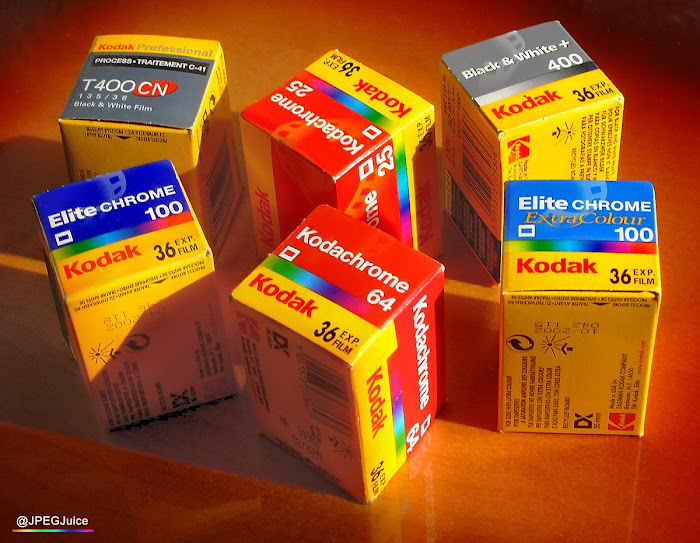
Once upon a time... Kodak 35mm film captured with a Fujifilm Super CCD.
On publication, the impact of the high-colour illustrations pleasantly surprised the editor, and he published another set the following month. But it would be the month after that, that the real catalyst for digital railway photography hit the streets. A catalyst from a rival publication, who ran a 12-page introductory epic: The Railway Magazine Guide to Digital Photography, by the renowned rail photographer Colin Marsden.
Whilst Marsden was an early digital adopter within the railway genre, he didn't buy his first digital camera until the format had overtaken film in the point and shoot market. There was a very good reason for that. Early on in the timeline, the results from affordable digital cameras were spectacularly bad. And in fact, aside from certain members of the paparazzi, who adopted very high-end digital early on for its incredible immediacy, virtually no serious photographer would entertain digital capture in its initial years - in any genre...
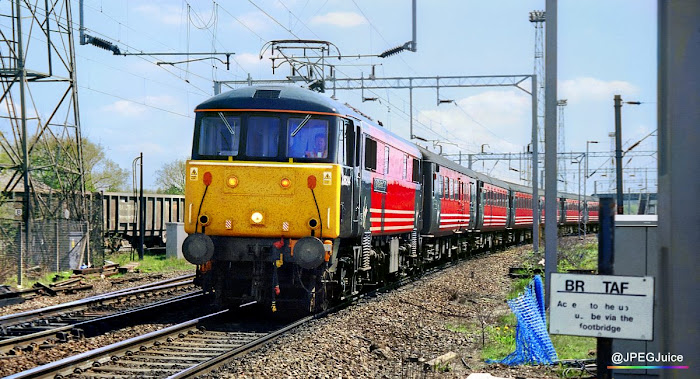
In the days before digital cameras were accepted as a viable tool for serious photographic capture, Kodak Royal Gold 35mm negative film was pitched to digital editing enthusiasts as an especially good solution for import to a computer via a film scanner. It had smooth grain in an ISO 400 emulsion and scanned with neutral colour, which could take saturation boosts. The above shot, captured on Royal Gold, shows 86244 heading the 12:34 Birmingham - Manchester on a diverted escape from the West Midlands, at Bescot Stadium.
THE ARRIVAL OF THE DIGICAM

A selection of digital memorables from the 2000s
Although Fujifilm had developed and made a fully digital camera as early as 1988, it would be 1996 before consumer digicams began to appear on the high street. At that point, the device's target market was not the photographer, but the gadget-crazed computer/tech geek. Serious photography magazines would barely reference digicams in the 1990s.
Even as late as 1999, most copies of Amateur Photographer carried zero editorial content on digital cameras, and references to them were normally confined to dealer ads and the odd competition. The high-tech photographic dealer Tecno would spend only about 11% of their AP ads' listing space on digicams in '99, and the models shown would usually be very heavily reduced in price. They had to be.
Early in the life of the digicam, output resolutions were unusably low, general aesthetic image quality was very poor, and the manufacturers were so desperate to claw back their R&D investment that they'd routinely spend next to nothing on hardware.
The purchaser would get a terrible lens, very cheap, plastic construction and hardly any features, at an exorbitant price. In the 1990s digital point and shoot market you were essentially paying the cost of a high-spec SLR, but getting a quality of image lower than that of a £6.99 35mm throwaway...
And in serious photography, which included the railway genre, the digital camera was given an extra hard time by the wonderful array of available colour film, which not only preserved the natural attractiveness of a scene, but actually enhanced it.
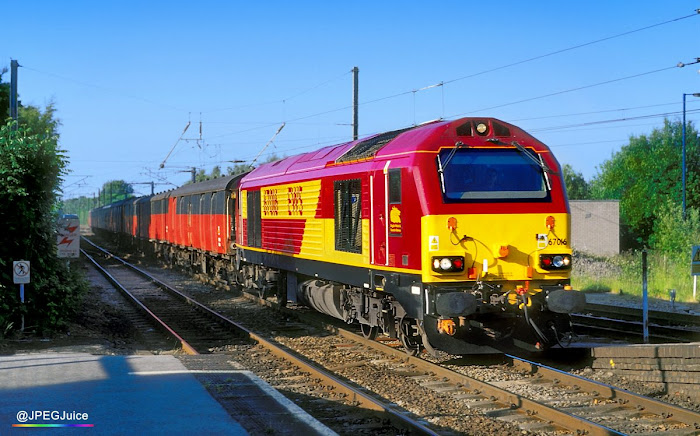
Renowned for its high saturation and, in particular, its powerful blue skies, Kodak Elite Chrome Extra Color film would be hard for railway photographers to part with. On its original mail sector work at Barnt Green, 67016 is frozen in time at the dawn of its life by the hi-impact colour slide emulsion.
Transparency film like Kodak Elite Chrome Extra Color, Kodachrome 64, Fujichrome Velvia and Agfa CT100 (also branded as Jessops CS100 in the UK) had special characteristics that would be extremely difficult for digital capture to duplicate. Photographers who had come to rely on the sweetness, definition and/or dynamic rendition of those films would take a lot more persuasion than the point and shoot market to switch to a digital camera.
POINT AND SHOOT STOP-GAP
But even the point and shoot consumer didn't adopt digital capture straight away. Initially, the tourist-type demand for high-tech cameras was fufilled by another technology that also made its market entrance in 1996: Advanced Photo System, or APS.
APS did record its photos on film, but the film was fully encased in a cartridge and the user was given an index print rather than a set of negatives. The film cartridge accepted instructions from the camera, and the lack of visible film, coupled with a facility to select different dimension formats for images on the fly, persuaded some consumers that APS cameras actually were digital. Between '96 and '99, APS cornered the market that would quickly shift to genuine digital capture in the new century.
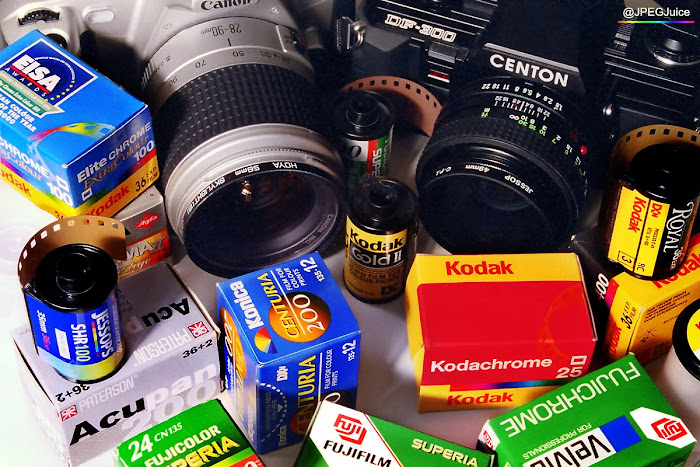
An encapsulation of the pre-digital era. How much of this 1990s paraphernalia do you remember?
GEEK MARKET
Computer magazines, however, had been enthusiastic about real digital capture from the start. Even though the devices were photographically inept, and often ridiculously expensive in relation to their build cost, the concept of making pictures solely in the digital domain caught the imagination of Mac and PC geeks, who did buy the more modestly-priced devices. There was, in particular, a buzz about being able to access and electronically transfer a photo immediately after taking it. This attracted press photographers, and would drive consumer purchases harder than all else once prices significantly fell.
In 1997, the Sony Mavica was considered good value by the computer magazines at £450, storing its images not on a capture card, but on an actual floppy disk, mounted inside the camera! At that time, a hi-res consumer-domain image was just 640 pixels by 480 pixels in size, and the quality of the Mavica's 640x480s was described by PC Format magazine as “excellent”. Actual photographers used rather less complimentary language, I recall.
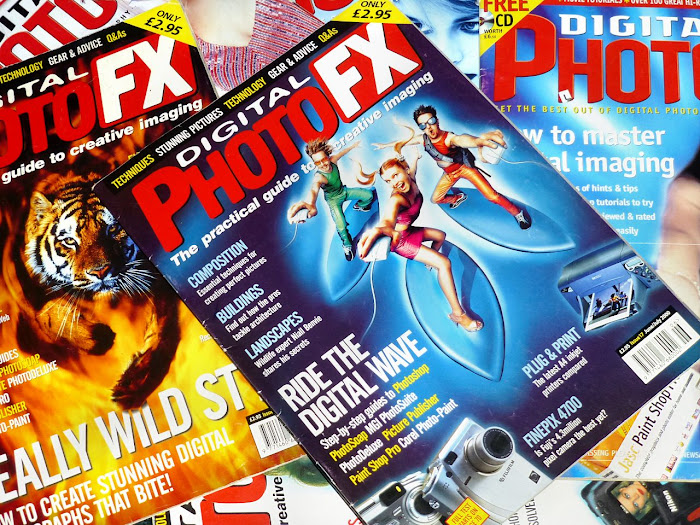
Launching in 1997, Digital Photo FX (DPFX) was the first magazine dedicated specifically to the wide gamut of digital imaging. The idea for the mag was clever in that it cored on the image-processing side of the genre, so it appealed to the growing crossover market using film to capture, and then converting their images to a digital format for editing in Photoshop or a similar package. DPFX also offered tutorials for some of the more modestly-priced photo editors, such as the brilliant Photo Soap.
FILM SCANNERS
The primary digital resort for serious photographers in the 1990s was the film scanner. Options like 1996's Nikon Coolscan II were vastly better value than digital cameras, producing an output of 3,888 x 2,592 pixels and retailing at around £350. The user would still need to shoot on film, but the results from each home scan were way superior to a standard lab print of the time.

After some grim prints from a local processing lab, I took a punt on the Coolscan II and was overwhelmed by the quality - particularly its colour rendition and its preservation of shadow and sky detail. The shot of 150010, above, was scanned with my Coolscan II. That kind of head-on lighting would typically not render well on a standard lab print, but the scan is very sweet. On the downside, the scanner pre-dated Nikon's electronic dust-removal feature (ICE), so negatives and slides had to be kept absolutely spotless. The Coolscan II also pre-dated the USB era, and thus required that a SCSI card be fitted inside the computer for realistically fast data import.
THE DIGICAM ALTERNATIVE
By comparison, the Fujifilm DX-7 digital camera occupied the same price ballpark in 1997, but produced only 640 x 480 pixels, along with optical defects like lens barrelling. There was no zoom, and the image display monitor was both too dim to see in strong sunlight, and too small to properly assess focus. The screens had to be tiny to avoid instant battery drain.
Like all consumer digicams from the time, the long shutter lag confined reliable shooting to static subjects only, and even with a tiny screen the batteries died within a couple of minutes. Another major problem with these early digital compacts was their very low dynamic tolerance. In high-contrast lighting they'd often burn out the highlights even when the exposure was correct. For quality and practicality, there was no contest versus 35mm film and a film scanner.
Through the rest of the 1990s, there was little progress in the digicam market. Resolutions did improve, with 2 megapixels (1600 x 1200 pixels) topping the point and shoot ranges by 1999. But hardware and optics were still blatantly cheap and substandard, and the “high” resolutions came at a price...
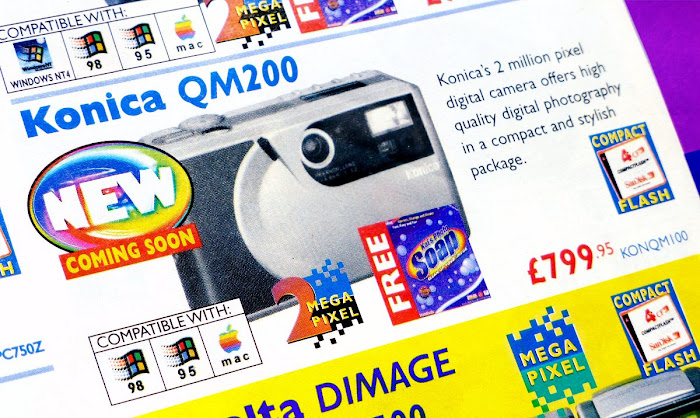
Ouch! The Konica QM200: £799 for a camera that, CCD chip and circuitry aside, probably cost the manufacturer less than £10 to produce.
Another growing consumer 'cheat' in the period before digicams established good value for money was the Kodak Photo CD. Film users could order the CD at the processing lab, and along with their prints, they'd receive their photos professionally scanned as digital files. The CD would then go into the computer, and the files could be imported straight into an image editor like Photoshop, Paint Shop Pro, Photosuite, PhotoDeluxe or Soap. All of these workaraounds delayed the mass acceptance of digital cameras.
NEW CENTURY, NEW ACCEPTANCE
The year 2000 brought a watershed in the camera enthusiast market - as summed up by DPFX editor Peter Bargh in the April/May issue that year. Bargh had recently visited the American Photo Marketing Association exhibition, where a new generation of consumer digicams had been premiered. He told readers...
“The good news for all us traditional photographers , who've been holding back from using a digital camera because of quality, is that quality is now pretty amazing.”It really was that much of a line in the sand. With resolutions now high enough to warrant it, brands began to take hardware quality and optics a lot more seriously. Sony, for example, shipped a Carl Zeiss lens on their DSC-F505V. And digital cameras as a breed, until now located at the back of the photographic retailers' catalogues, rapidly made their way straight to the front.
The game-changing new releases came from a variety of brands, but they all had one of two main capture systems. A 3.34 megapixel Sony ICX252AK chip, or (Fuji products only) a Fujifilm Super CCD. Most of the cameras were compacts, aimed at tourists and the like. They included the Canon Powershot S20, the Nikon Coolpix 990, the Casio QV3000, the Olympus C-3030, the Fujifilm Finepix 4700 and the Fujifilm Finepix 40i. But Fujifilm's S1 Pro was a digital SLR shelled off the Nikon F60 and able to accept existing Nikon F-mount lenses.

The S1 Pro was pricey at well over two grand, body-only, and it came steeped in controversy due to the interpolated output rating of the Super CCDs, which were quoted by Fuji at nearly double their native resolution. Basically an attempt to con the market, in the eyes of seething rivals Sony. But the S1 Pro's astounding 6 megapixel output did withstand close inspection, and the device delivered good, strong colour, with all of the control serious photographers had come to expect.
I worked in photographic retail in the era of the S1 Pro, and can remember selling, as well as using it. It was a life-changing purchase for some of the serious photographers moving away from film for the first time. For all the controversy it caused, I still rate the S1 Pro as a landmark in digital capture's courting of 'real' photographers. Whether or not the 6 megapixel rating was a legitimate resolution, that figure did connect with people who were passionate about image quality. And the camera's price, whilst high, fell within the reach of many who had never before been able to afford a digital SLR.
The previous year, the cheapest DSLR catalogued by Jessops had been Minolta's RD175, producing just 1.75 megapixels at £3,789. And some better specified models had cost over £10,000 in '99. The S1 Pro's 6 megapixels for £2,229 created its own league of value when it exploded into view in Y2K.
POINT AND SHOOT GOES WILD

My beloved Fujifilm Finepix 6800Z - a £700, F.A. Porsche-designed digital compact from 2001, with a 6 megapixel Super-CCD output. The device houses a similar capture system to that in the S1 pro, but the lens is blatantly inferior to a Nikon F, and the S1 Pro has a physically much bigger CCD - albeit delivering only a marginally higher resolution. Like other compacts of its generation, the 6800Z suffers from shutter lag, and stores to a delicate Smartmedia card, which requires a dedicated card-reader to import to computer. But using the camera provides a nostalgic reminder of the excitement that the digital imaging world brought us at the dawn of the century.
The vast increase in value and viability at the upper end of the market also heavily impacted the lower end. The introduction of high-res CCD chips saw price-crashes for older, low-res chips, and megapixel digital cameras quickly dropped into the price territory of a decent 35mm compact. The run up to Christmas 2000 saw the Fujifilm Finepix 1300 retailing at £199. I can tell you from my own experience in retail that it sold like beer in a desert. Well, almost.

The Fujifilm 1300 was one of the first digital cameras to bring acceptable results down into the tourist and point-and-shoot price range. Mine still works, and you can see how its images can look on a good day in the above shot of 323213 at Northfield station.
The camera is very basic, with no zoom, a very small and dim monitor screen, and a max image size of 1280 x 960 pixels. Due to the shutter lag, the aperture-priority algorithm and the clunky autofocus, I wouldn't advise using it on a moving target. And if you try to use the viewfinder instead of the dim screen, your composition could end up way off-centre. But in 'safe' lighting with static subjects, the camera was good enough in its day to satisfy many a tourist.
Christmas 2000 was a really important period for the digicam, and the first truly competitive round of digicam selling saw Dixons declaring digital retail ahead of film camera sales in the first half of 2001.
In the £500 to £800 ballpark, it was now possible to buy some really nice digital compacts, and the marketing tactics became very aggressive indeed. Kodak memorably stunned the market by giving away the full £500 version of Photoshop for free with their already rather enticing DC4800. And in mid 2001, Nikon introduced their £4,000 D1X SLR. 5.47 megapixels with zero interpolation, delivering a quality of image that a critical eye would still respect today.
WAITING FOR DSLRs
It was that camera - the Nikon D1X - which became Colin Marsden's first serious digital capture device, and provided his contributions to The Railway Magazine's landmark 12-pager, hitting the shops at the end of summer 2002.
But in the immediate wake of that feature, little changed at the lineside. Rail photographers would still turn up with film-loaded cameras, and that situation persisted for a good couple of years. Why?

By 2006, this sort of quality was possible with a budget, pocket digicam. 37609 was captured at Stoke Prior with the F-Chrome mode on a Fujifilm Finepix V10.
The main reason was the high price of DSLRs. Although compact digicams now had a tight grip on the tourist market, the compacts had various incompatibilities with the rail genre. It was not possible to switch lenses, and very few digital compacts of the early 2000s had adequate zoom. Worse, there was a long delay while each image was stored to the capture card, and that prohibited multiple shots of a moving train. In 2002, a lot of digicam models still had unacceptable shutter lag too, which once again limited the scope for accurate action shots.
So broadly, the rail photographers were waiting for digital SLRs to drop into a price ballpark that would not provoke a divorce.
For the average rail photographer. the widespread conversion to digital capture took place forward from 2004, and really gathered pace in the period between 2005 and 2007. By that time, not only had new DSLRs dropped into more realistic price territory - a secondhand DSLR market was also opening up, allowing photographers to get hold of high-end but older equipment without breaking the bank.
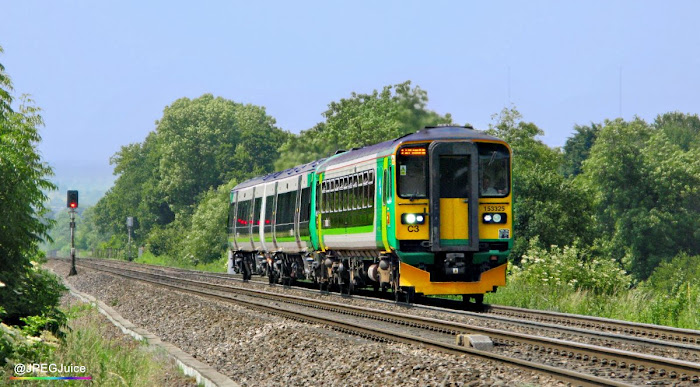
And by the second half of the 2000s, pocket digicams had evolved to incorporate powerful zoom, rugged construction, and near-SLR quality - all in sub-£400 price territory. This shot from the Lickey Incline was taken in 2008 with the Canon G9. Film had no answer to the G9's definition and convenience. For the once unassailable 35mm format, it was all over.
And then came the era of the smartphone, which has ushered in many of the people who never previously considered themselves photographers. Nearly everyone is now in a position to record the interesting things they see, and it's all thanks to developments that took place between 1996 and 2000, when digital capture attained competence within a pocket device. Let's not forget those days. The days when we grabbed a selfie before selfies were a thing, and stored it away, embarrassed at our vanity. How the world has changed since then.